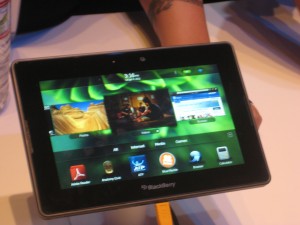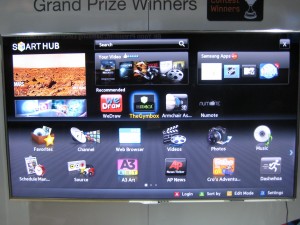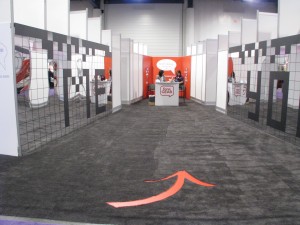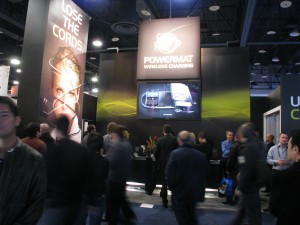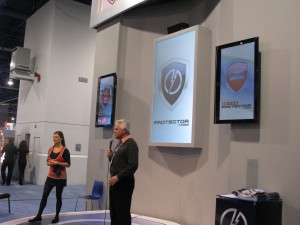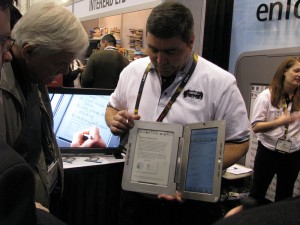On the plane heading to CES in Las Vegas, I decided to think about innovations I’d LIKE to see prior to reading my sheaf of press releases to find out what I actually am GOING to see. This year I’m not looking for any dramatic product category breakthroughs. Instead I’m on the prowl for stuff that makes our life easier, especially when it comes to food and eating related tasks.
The iGrill Bluetooth thermometer mentioned yesterday is a good place to start. It’s pretty intuitive how it works without knowing much more than the name. You can be sitting in front of the game indoors and still monitor the temperature of your meat (or perhaps the internal temperature of the grilling chamber) and when it’s done, get up and waddle out into the sunlight to collect your perfectly smoked brisket.
At $99, the iGrill seems a bit pricey for a one-trick pony. It would be nice if, after reading the temperature, it can do something for you… like turn off the heat (if it’s a gas grill) or dump a fresh supply of wood or charcoal on the fire. And hey, how about a really smart convection oven that can show you temperature and airflow in your oven in a heat map diagram on your iPad and you can move your finger around to adjust things? Or, a device that releases an even supply of steam inside the oven to produce a perfect loaf of crusty bread? That doesn’t need to be electronic, probably, just a fancy teapot with tricky vents and valves. I’m digressing a bit…
Lots of devices are integrated systems these days…. think of your dishwasher, or clothes washer, and the multiple functions that happen at the touch of a button. These things are controlled electronically, so theoretically it does not seem to me complicated or expensive to add a software interface that lets you monitor and modify what’s going on. Then add the Bluetooth connection and software on the computing device, and you’re in business, right?
Every year there are a number of platform areas at CES…. a number of vendors following a common standard such as X-10 or Zigbee. The booths often seem kind of sad and underfunded and it’s hard to see them starting a revolution. Meanwhile some of the big vendors, often Panasonic, will develop a technology on their own and if it takes off then others adopt it. Such is the inefficient platform development system in conumser electronics.
I’d also like to see a solution that lets you retrofit a remote control, software based interface to legacy gadgets… like Slingbox, but for my bread machine. I have been fiddling with one of these devices and it shows promise. So, what if I want to set it from the road to turn on and have a hot fresh loaf waiting when I come home? Slingbox’s secret is that it uses infrared technology,… a communications channel between the home entertainment system and a remote that is already there. The only interface to the bread machine is your finger. But, you’re saying, I could do all the programming and have some kind of delayed device to give power to the machine. That might work on some models but not mine; you have to unplug then plug it back in to input cycle instructions.
I am eager to see if some smarter soul has figured out some of these things for me…..

